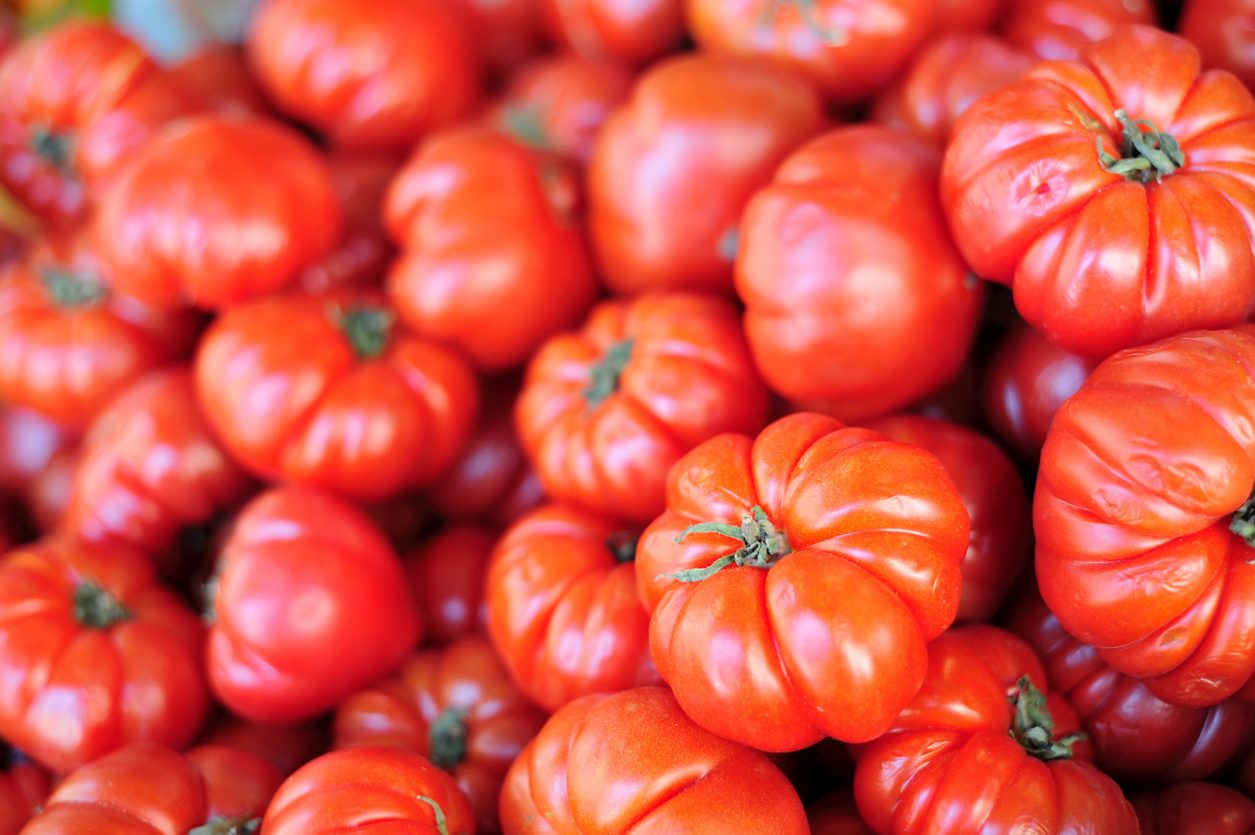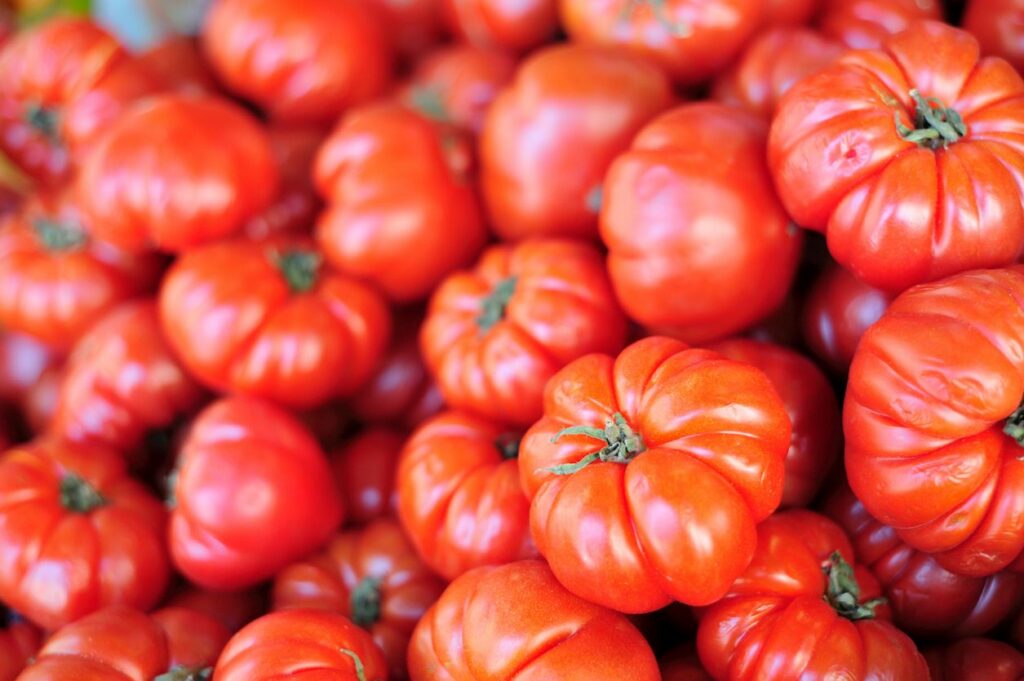Beefsteak Tomatoes: How To Grow And Care For Beefsteak Tomato Plants
Beefsteak tomatoes deserve a better place on every table and in every garden. These plants have been relegated to the bottom of the tomato grading system. We think this is unfair. Maybe it has something to do with their unusual shape. But don’t let their lumpy fruits blind you from the fact that beefsteak tomatoes are delicious, sweet, and full of flavors.
And did we mention that they are by far the largest tomatoes you can grow in your garden? We’re talking about the size of the fruit, not the plant itself. In some cases, you can grow a tomato that weighs around one pound. As for beefsteak tomato plants, they are easy to grow and less prone to pests and disease than other tomato species.
So if you have the time and above all the space in your garden and want to give the beefsteak tomatoes a try, this post will show you ins and outs of planting and harvesting these sweet tomatoes.
Beefsteak Tomatoes at a Glance
Not all tomatoes are red, fleshy, and packed with sweetness. But the beefsteak tomatoes come as close to this ideal formula as possible. And there’s a reason for that. Unlike other tomato species, the beefsteak tomatoes have smaller seed pockets. This translates into more flesh and plenty more juice than your average plum tomato for example.
It’s this extra flesh that gives the fruits their distinct shape. Granted, they will not win a tomato beauty contest. But when you’re cooking tomatoes or adding them to your salad, you really want flavors, taste, and juices rather than looks. So put your prejudices aside, and let’s judge this tomato by its content, not the unshapely cover.
The fruits of the beefsteak tomatoes are usually oblate. Sometimes they are flat like a donut without the hole in the middle. The cheeks of the tomato bulge and stand out in very distinct sections. The skin is often smooth and shiny while they vary in color from red to pink and even orange.
But despite all these advantages, these tomatoes are not grown commercially. It’s not just that people don’t buy them, they also take more care and time than other tomato species to grow and ripen. This is why if you want to use the beefsteak tomato in your kitchen, you will just have to grow it in your garden.
Benefits and Uses of Beefsteak Tomatoes
So why would you want to go through the trouble of growing beefsteak tomatoes instead of buying cherry tomatoes at the store? Well, there are many reasons for that. Here are the most compelling ones.
- Slice the tomato up and use it in your burger or BLT sandwich.
- Dice it and garnish your salad with it. It tastes better than it looks.
- Mix them with avocado and mozzarella to create a layered sandwich as high as your appetite can take.
- Beefsteak tomatoes are fleshy fruits with plenty of juice. This makes them ideal for soups, juices, and pasta sauces.
- If you like roasted tomatoes, you couldn’t go wrong with this one. Not only does it have a good texture for roasting, but the flavors also get better when roasted than when eaten raw.
- You don’t have to store them in the fridge. These tomatoes are diseases resistant and will stay fresh at room temperature.
- Beefsteak tomatoes can be dried. This means you can use them all year round.
Beefsteak Tomato Varieties
While not a favorite crop in farms or gardens, there are many natural beefsteak tomato varieties to make you consider giving them a try. In general, tomatoes are classified as determinate or indeterminate plants. Indeterminate tomatoes grow all summer and flowering doesn’t stop their growth. Determinate tomatoes will stop growing once the flowers bloom. Here are some of the most popular varieties that you can grow.
- Big Beef: An indeterminate variety that keeps growing and producing spherical shaped fruits. The tomato is fleshy and you’ll use most of the fruit since its stem is small and doesn’t take up much space.
- Beefmaster: The fruits are large and can grow to 2 pounds in the right conditions. It’s highly resistant to diseases and the fruits are bright red when ripe. It’s also an indeterminate type.
- Corazon: Gardeners grow this variety because it has small seeds leaving more space in the fruit for flesh and juice. You can use them in soup and sauce and they have a delicious aroma and taste.
- Brandywine: The flesh of the fruit is creamy and the tomato itself is pink in color. Only you won’t a good crop out of it. Maybe enough tomatoes to make a salad from each plant.
How to Grow Beefsteak Tomato
The best way to grow beefsteak tomatoes is to start them from seeds. As we mentioned earlier, these tomatoes need more time and patience. Although that extra time and care don’t mean that growing or maintaining these tomatoes are difficult to grow. Here’s how to start beefsteak tomatoes from seeds in easy steps.
-
- You should always start your beefsteak tomatoes indoors and once the plants have a few leaves, you can transport them to their permanent place in the garden.
- Start the seeds about 8 weeks before the last frost.
- Either go with a seeding mix or choose the less expensive option of soilless potting mix. The seeds will germinate well in either type.
- Pick a small pot with plenty of drainage holes. It can be a shallow pot since the seeds don’t develop deep roots at this stage.
- Fill the pot with the potting mix leaving about a half-inch from the edge.
- Place two seeds in the middle of the pot.
- Cover them with a thin layer of soil. Press the soil gently with your fingers to push out air pockets.
- Water the pot sparingly. Don’t let the soil get wet as this could cause the seeds to rot.
- Keep the soil moist until the seeds germinate and cover the pot with plastic.
- Place the pot in a sunny spot that gets at least 4 hours of sunlight.
- Once the seeds germinate, remove the plastic cover. Pinch off the less healthy of the two seedlings.
- Once the leaves grow on the seedling you can move them outside in the garden or greenhouse.
Beefsteak Tomato Care
As for care and maintenance, beefsteak tomatoes don’t require more attention than other tomato species. That said, you’ll need to provide adequate soil, enough light, and the right temperature to make sure you have a successful tomato crop.
Soil
Once you have moved the seedlings from their soilless potting mixture, you need to plant them in rich, moist, but well-drained soil. How do you achieve that? Well, you start with neutral soil and work in some organic materials and a lot of perlite. The organic materials will feed the plants while the perlite improves the drainage of the soil. You’ll use mulch to improve moisture retention. Pine needles, shredded oak bark, or rotting leaves all serve as mulch and help with weeding as well.
Watering
Watering plants is always a tricky part. Especially if the plants in question have special irrigation needs. While beefsteak tomatoes are thirsty plants, they don’t want the soil to get wet. You have to achieve a certain degree of moistness and not exceed it. That’s where mulching comes in. You need to allow the topsoil to dry out before you water the plants. When you water, sprinkle the water until the soil becomes moist. Use mulch to retain moisture in the soil for a long time especially if the hot summer months.
Fertilizer
Like many veggies, beefsteak tomatoes need plenty of nutrition to grow and produce a healthy crop. On average each plant will need about half a cup of a 5-10-5 fertilizer. Wait for the flowers to fade and the fruits to start developing. Then apply the fertilizer to the soil and water immediately. You will need to apply again just when the fruits are about to ripen. Avoid getting the fertilizer close to the roots since that could burn them.
Companion Plants
When you have a vegetable garden, you know that some veggies grow nicely together while others should be kept as far apart as possible. Beefsteak tomatoes grow well with carrots, garlic, asparagus, and onions. They will thrive together and encourage good produce.
On the other hand, you should not grow these tomatoes with kale, potatoes, cabbage, or Brussels sprouts. Also, avoid planting them near corn or fennel. These plants compete rather than coexist and will stunt the growth of the tomatoes.
Harvesting Beefsteak Tomatoes
It’s true beefsteak tomatoes take longer to ripen. They also need to be fully ripe on the vine before you can harvest them. If you gather them green, they will not have the same flavors or tastes as fully ripe ones. So how do you know the tomatoes are ripe and ready to harvest?
Usually, tomatoes ripen first at the bottom. The skin also changes into a waxy and smooth texture. You don’t have to wait for the whole fruit to ripen. Even if the top is still green, you can pick the fruit. This top part will usually ripen at room temperature. To encourage the vine to focus on ripening the fruits, remove any new flowers. This is best done toward the end of the season when there’s no time for new fruits to develop.
Pick the ripe tomato with your hand and twist the stalk to break it off. You don’t need to store the tomato in the fridge since that diminishes their flavor and taste. Keep them in the kitchen or you can roast or dry them for later use.

